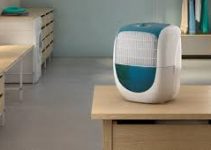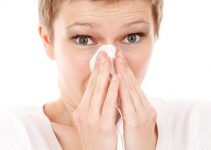Although you might be worried about the quality of the air outdoors, you may forget that indoor air can be harmful, too. It’s true; the air that’s outside your house is the same air that’s inside your house. In this article, we’ll show you some ways that you can naturally restore healthier air in your home.

Before talking about natural air purifiers lets quickly consider how to purify home air by being mindful of the types of things you use in your home.
First, do not use excess paint that releases VOC. Using too much paint can quietly pollute your home air. When you do have to paint, be mindful of the amount of paint that you use. If you have to do indoor painting, be sure to use paint with low VOC.
Another source of indoor air pollution comes in the form of household cleaners. Although some chemicals may be very effective at cleaning your home and surfaces, they may also be polluting your air and damaging your health. Always be sure to read all warning labels and follow directions. These chemicals can present health risks to children and pets.
Now that you know a little about the proactive steps you can take to reduce indoor air pollution let’s take a look at some natural air purifying methods.
Natural Air Purifying Methods
1. Salt lamp all the way from Himalaya
This is no ordinary lamp. It contains crystal salts and a bulb inside. When the bulb is heated, it releases negative ions which can help neutralize pollutants in your home air.
These lamps come in different sizes, shapes, and designs. There’s bound to be one that fits in with your home decor. The warm light is soothing and creates a gentle glow. They can be used as a nightlight. A salt lamp is a great way to naturally clean the air in your home.
2. Beeswax candles
We often buy scented candles, overlooking the fact that these candles are made from petroleum jelly. These types of candles are made with dangerous chemicals that may aggravate symptoms in asthma patients. On the other hand, most beeswax candles burn without generating scent or smoke. Smoke-free air is always healthier. The candle’s mechanism is similar to that of the salt lamp; they release negative ions to trap particles in the air.
Beeswax candles do tend to be more expensive than scented ones. However, beeswax candles often burn more slowly and for longer periods of time. Don’t let the price discourage you. Remember, it’s all about cleaning the air in your home.
3. Natural air purifier
Scientists all over the world have highly-technical means of purifying the air. However, if you are more interested in a natural solution, having some plants in the home can offer some of the same clean-air benefits.
Reducing the volume of appliance use can help, too, as these devices emit heat and often dangerous chemicals. Indoor plants can help cut down on pollutants in the air while also giving your home a nice look. Ceiling fans and heat-blocking window treatments can also help keep your air cleaner.
4. More green to make your air clean
Most people know that plants release oxygen, effectively purifying the air. However, it’s recently been discovered that certain plants can absorb some harmful elements like benzene, formaldehyde, trichloroethylene, and more. These plants include peace lily, Boston fern, snake plant, Golden Pothos, and English Ivy. Growing them in your home is a great way to cut down on air pollutants.
5. Bamboo charcoal or Moso bags
For many years, charcoal has been used as an effective purifier. It’s used in water purifiers, too. Most recently, some companies have started using charcoal in beauty products. Charcoal is also a very effective air purifier. Moso linen airbags, for instance, contain a high density of bamboo charcoal. They absorb moisture and can help trap allergens and other particles. Then, the bags can be reused. If you do choose to go this route, remember that they need to be left in the sun sometimes. These products are available on Amazon.
Conclusion
If you want to purify the air in your home naturally, any of the items on this list can help. Remember that you should take notice of the kinds of products that you use in your home, as you may be inadvertently worsening air quality.


